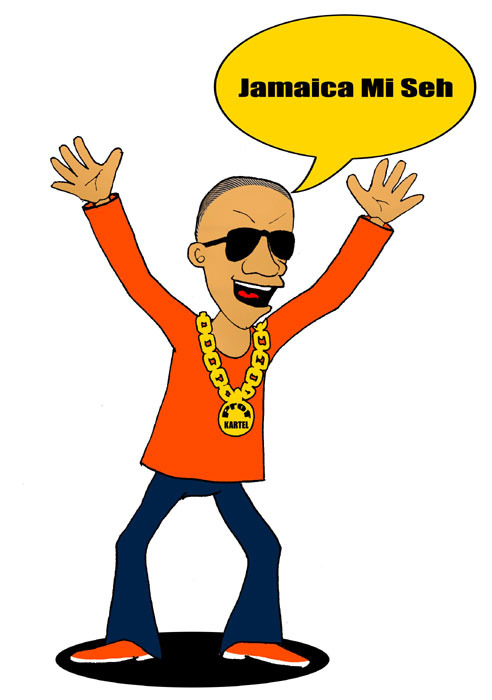
One of the vital parts of Jamaican culture is the cultivation of brilliant artists who dedicated themselves to their art and refuse to commercialize it. Jamaica is fortunate to have two distinguished cartoonists who exemplify this dedication and whose artwork has been seen around the world, creating social awareness for Jamaica.
1) Clovis Brown
Clovis Brown grew up in Spanish Town, Jamaica, where he attended Crescent-All Age School, Bog Walk High School, and The Edna Manley School of Visual and Performing Arts. As a student at Bog Walk Secondary School, he was often bombarded with requests from students to fill up their drawing books with art, exclaiming, “Clovis, fill these up with drawings for me nuh!”
He was recognized for his impromptu drawing talents and approached by a representative from The Edna Manley School of Visual and Performing Arts. He accepted the invitation to become a student there and began excelling in still life pictures. Clovis Brown went on to specialize in graphics and branched out in art work and illustration.
Upon graduation from The Edna Manley School of Visual and Performing Arts, he worked as a freelancer for a top Jamaican advertising firm, Moo Young, Butler and Associates. During his employment there, he drew a full page of cartoons featuring former Prime Minister Edward Seaga and His One Man Band. He became known for his cartoons and was in demand by rival political parties and newspapers.
His career with the Jamaican Daily Gleaner began in the 1980’s due to his renown as a cartoonist who contributed to the political education of Jamaicans through his caricatures and artwork. Working at the Gleaner as an editorial cartoonist, he gained valuable experience that enabled him to take a position at the Jamaican Daily Observer, where he worked for over 20 years.
Clovis Brown prides himself on his ability to unveil the antics of Jamaican politicians and lawmakers using candor and humor. His work was featured in a book by Kelly Griller, “Every Road Leads to School,” and on the Daily Gleaner website where he created “Everbody Tun Don” featuring Edward Seaga.
In Clovis Brown’s world, the work of a political satirist is rewarding, but also has its downside. which involves being plagued by frivolous lawsuits claiming defamation of character.
2) Las May
Las May is a self-taught cartoonist, and like Clovis Brown, he studied art at the prestigious Edna Manley School of Visual and Performing Arts and also started his career as a cartoonist for the Jamaica Gleaner.
While he would rather be known as a graphic artist and illustrator, his first big break came when he submitted a comic strip story to the Gleaner that was published in the Jamaican Star. This comic strip jump-started his career, and he became a cartoonist with the Star’s “Laugh With Us” section.
Las May has become internationally famous as a result of his cartoons, which tackle the Jamaican dancehall scene, inner city issues, drug dealing and government overspending in a humorous way. Some of his work is displayed on YouTube, “The Jamaican Election Campaign 2007,” LasMay.com, (“Depressed Police,” “Can You Trust The Police?” and former Prime Minister “Portia Miller Simpson as a Donette.”
These cartoon artists perform a much needed service in society because they help to inform the educated, uneducated, the hearing impaired and mentally challenged regarding developments in their community and the world. Cartoonists represent an extension of child’s play, bringing light humor to the serious and challenging aspects of society that confront Jamaicans daily.
Clovis Brown and Las May have provided artistic entertainment and political satire for the edification of Jamaicans for years, and as is said in Jamaica, “Sometimes yu haffi tek bad tings mek joke….”






